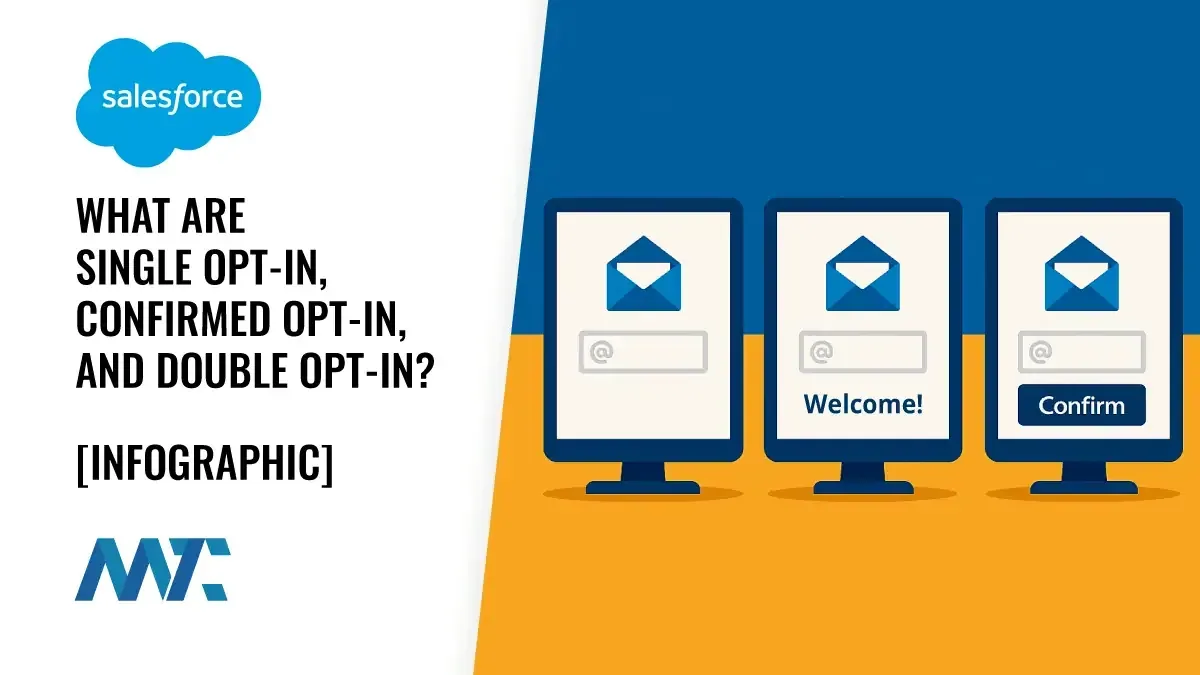What Are Single Opt-In, Confirmed Opt-In, And Double Opt-In?


When building an email list, how you collect consent isn’t just a technical detail—it shapes your entire subscriber relationship, affects email deliverability, and determines compliance with privacy regulations. The three primary types of opt-in mechanisms (single, confirmed, and double) each offer a different balance of convenience, quality control, and legal protection. Understanding their differences can help you match the right approach to the goals of your email marketing program.
Table of Contents
Single Opt-In
Single opt-in is the simplest and fastest way to build a list. A user enters their email into a form and is immediately added to your database without needing to take any additional action. It’s commonly used in campaigns where reducing friction is the priority—such as accessing a gated piece of content or registering for a time-sensitive offer. Because there’s no validation step, anyone with access to the form can enter any email address.
Advantages
- Faster list growth due to fewer steps.
- Seamless user experience with minimal abandonment.
Disadvantages
- Higher risk of fake, mistyped, or malicious email addresses.
- Vulnerable to bots and form abuse.
- May result in increased bounce rates or SPAM complaints, affecting sender reputation.
Tip: Use CAPTCHAs, throttling, or hidden honeypot fields on your forms to reduce abuse if you opt for this approach.
Confirmed Opt-In
Confirmed opt-in strikes a balance between simplicity and clarity. After a user submits their email address, they’re added to the list and sent a welcome message that acknowledges the signup. However, the recipient is not required to take further action to confirm. This method is frequently used for transactional emails, such as order confirmations, shipping notifications, or user account communications, where it’s essential that the message gets through and a prior action, like a purchase or sign-up, implies consent.
Advantages
- Immediate list inclusion without user friction.
- The welcome email reinforces brand experience and expectation setting.
Disadvantages
- Doesn’t prevent fake or incorrect email entries.
- Still leaves you open to higher unsubscribe rates or compliance questions if challenged.
1 an easy way to unsubscribe or adjust preferences.
Double Opt-In
Double opt-in is the most deliberate and secure form of consent. After submitting their email, the user receives a separate message with a confirmation link. Only after clicking that link are they added to the active list. This method verifies both the accuracy of the email address and the subscriber’s intention to receive ongoing communications. It’s considered the gold standard for email newsletters, promotional campaigns, and other marketing outreach where ongoing engagement and trust are paramount.
Advantages
- Ensures email accuracy and clear user intent.
- Reduces SPAM complaints, hard bounces, and list decay.
- Builds a more engaged, high-quality subscriber base.
Disadvantages
- Slightly more friction may result in lower opt-in rates.
- Requires additional setup and messaging infrastructure.
Tip: If using double opt-in, customize the confirmation email and subject line to align with your brand voice—many users skip generic messages or think they’re automated SPAM.
Choosing the Right Opt-In Type
Each opt-in method serves a different purpose. For transactional communications that stem from an existing relationship or event (like an order), confirmed opt-in is generally sufficient. For marketing campaigns where ongoing communication and legal defensibility are important, double opt-in is the safer and more strategic choice. Single opt-in can be viable for fast-paced acquisition campaigns but comes with increased risks and responsibilities, particularly in international or regulated markets.
The way you collect consent says a lot about your brand—and affects your deliverability, compliance, and long-term subscriber relationships. While double opt-in may seem like an extra step, it offers the clearest signal of genuine interest and builds a stronger, more engaged email list. As privacy regulations evolve and email platforms become more sophisticated in filtering low-quality senders, investing in a cleaner opt-in strategy is more than a compliance checkbox—it’s a competitive advantage.








